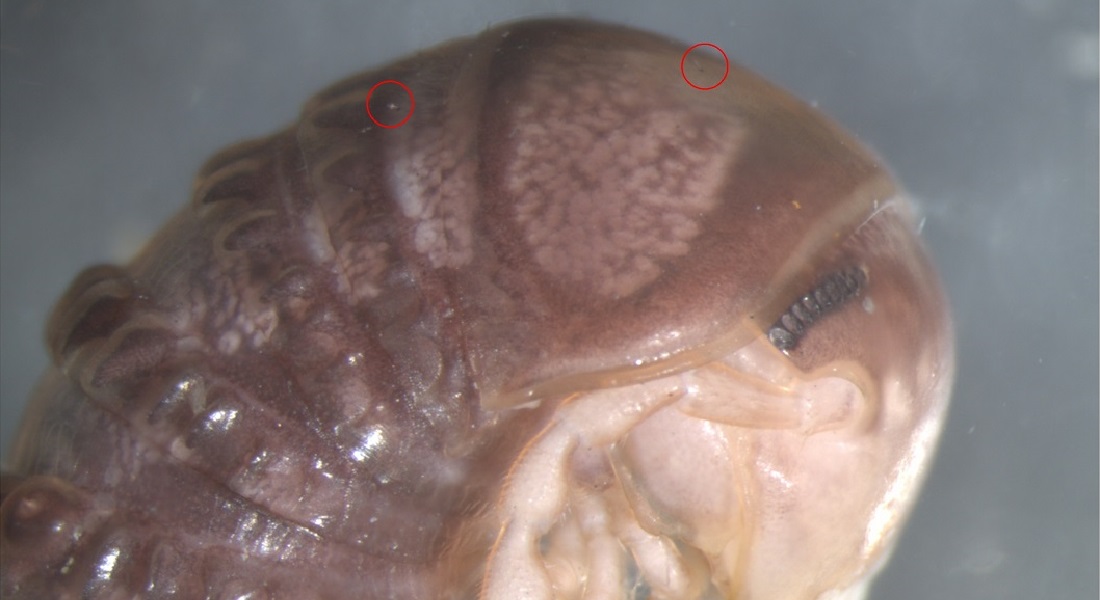Researchers have discovered a new species of fungus via Twitter. They call it Troglomyces twitteri.
The unique fungal parasite grows around the reproductive organs of millipedes.
The discovery began with Ana Sofia Reboleira, a biologist and associate professor at the University of Copenhagen’s Natural History Museum of Denmark, scrolling though Twitter. She stumbled upon a photo of a North American millipede her US colleague Derek Hennen of Virginia Tech shared. A few tiny dots stood out to her well-trained eyes.
“I could see something looking like fungi on the surface of the millipede. Until then, these fungi had never been found on American millipedes. So, I went to my colleague and showed him the image. That’s when we ran down to the museum’s collections and began digging,” explains Reboleira.

Together with colleague Henrik Enghoff, she discovered several specimens of the same fungus on a few of the American millipedes in the museum’s enormous collection—fungi that researchers had not previously documented.
This confirmed the existence of a previously unknown species of Laboulbeniales—an order of tiny, bizarre, and largely unknown fungal parasites that attack insects and millipedes.
Reboleira says the discovery is an example of how sharing information on social media can result in completely unexpected results.
“As far as we know, this is the first time that a new species has been discovered on Twitter. It highlights the importance of these platforms for sharing research—and thereby being able to achieve new results,” she explains.
“I hope that it will motivate professional and amateur researchers to share more data via social media. This is something that has been increasingly obvious during the coronavirus crisis, a time when so many are prevented from getting into the field or laboratories.”
Reboleira believes that social media is generally playing a larger and larger role in research. She also stresses that the result was possible because of her access to one of the world’s largest biological collections.

“Because of our vast museum collection, it was relatively easy to confirm that we were indeed looking at an entirely new species for science. This demonstrates how valuable museum collections are. There is much more hiding in these collections than we know,” says Reboleira.
Laboulbeniales-fungi like Troglomyces twitteri look like tiny larvae. The fungi are in a class of their own because they live on the outside of host organisms, and even on specific parts of bodies—in this case, on the reproductive organs of millipedes. The fungus sucks nutrition from its host animal by piercing the host’s outer shell using a special suction structure, while the other half of the fungus protrudes.
Approximately 30 different species of parasitic Laboulbeniales-fungi attack millipedes. Researchers only discovered the vast majority of these after 2014. According to Reboleira, there are most likely a great number remaining to be discovered. Research in the area of Laboulbeniales remains extremely scarce.
Nor is much known about their own biology, says Reboleira, who researches these fungi on a daily basis. She believes that these fungi can not only teach us about the insects upon which they live, but also about the mechanisms behind parasitism itself—that is, the relationship between parasites and their hosts.
She hopes that the research will also provide useful knowledge about the parasites that attack and can harm human health.
The research appears in the journal MycoKeys.
Source: University of Copenhagen



